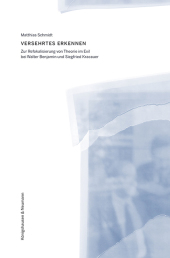
The Oxford Handbook of Egyptian Epigraphy and Palaeography
Series: Oxford Handbooks;
- Publisher's listprice GBP 38.99
-
18 627 Ft (17 740 Ft + 5% VAT)
The price is estimated because at the time of ordering we do not know what conversion rates will apply to HUF / product currency when the book arrives. In case HUF is weaker, the price increases slightly, in case HUF is stronger, the price goes lower slightly.
- Discount 10% (cc. 1 863 Ft off)
- Discounted price 16 764 Ft (15 966 Ft + 5% VAT)
Subcribe now and take benefit of a favourable price.
Subscribe
18 627 Ft

Availability
Estimated delivery time: Expected time of arrival: end of January 2026.
Not in stock at Prospero.
Why don't you give exact delivery time?
Delivery time is estimated on our previous experiences. We give estimations only, because we order from outside Hungary, and the delivery time mainly depends on how quickly the publisher supplies the book. Faster or slower deliveries both happen, but we do our best to supply as quickly as possible.
Product details:
- Publisher OUP USA
- Date of Publication 18 August 2025
- ISBN 9780197800317
- Binding Paperback
- No. of pages714 pages
- Size 246x173x41 mm
- Weight 1179 g
- Language English
- Illustrations 101 B/W halftones, 20 color halftones, 8-page insert 688
Categories
Short description:
This Handbook discusses current theories with regard to the cultural setting and material realities in which Egyptian epigraphy was produced; familiarizes the reader with epigraphic and palaeographic techniques and practices; and outlines and reviews traditional and emerging techniques and challenges as a guide for future research.
MoreLong description:
The unique relationship between word and image in ancient Egypt is a defining feature of that ancient culture's records. All hieroglyphic texts are composed of images, and large-scale figural imagery in temples and tombs is often accompanied by texts. Epigraphy and palaeography are two distinct, but closely related, ways of recording, analyzing, and interpreting texts and images. This Handbook stresses technical issues about recording text and art and interpretive questions about what we do with those records and why we do it. It offers readers three key things: a diachronic perspective, covering all ancient Egyptian scripts from prehistoric Egypt through the Coptic era (fourth millennium BCE-first half of first millennium CE), a look at recording techniques that considers the past, present, and future, and a focus on the experiences of colleagues. The diachronic perspective illustrates the range of techniques used to record different phases of writing in different media. The consideration of past, present, and future techniques allows readers to understand and assess why epigraphy and palaeography is or was done in a particular manner by linking the aims of a particular effort with the technique chosen to reach those aims. The choice of techniques is a matter of goals and the records' work circumstances, an inevitable consequence of epigraphy being a double projection: geometrical, transcribing in two dimensions an object that exists physically in three; and mental, an interpretation, with an inevitable selection among the object's defining characteristics. The experiences of colleagues provide a range of perspectives and opinions about issues such as techniques of recording, challenges faced in the field, and ways of reading and interpreting text and image. These accounts are interesting and instructive stories of innovation in the face of scientific conundrum.
Recommended.
Table of Contents:
List of Illustrations
Abbreviations
Introduction: Vanessa Davies and Dimitri Laboury
I. Cultural and Material Setting
1. Form, Layout, and Specific Potentialities of the Ancient Egyptian Hieroglyphic Script
Pascal Vernus
2. The Content of Egyptian Wall Decoration
Niv Allon
3. The Egyptian Theory of Monumental Writing as Related to Permanence or Endurance
Boyo G. Ockinga
4. The Historical Record
Peter Brand
5. Egyptian Epigraphic Genres and Their Relation with Non-epigraphic Ones
Julie Stauder-Porchet and Andreas Stauder
6. Designers and Makers of Ancient Egyptian Monumental Epigraphy
Dimitri Laboury
7. Audiences
Hana Navratilova
8. The Materials, Tools, and Work of Carving and Painting
Denys A. Stocks
9. Recording Epigraphic Sources as Part of Artworks
Gabriele Pieke
II. Historical Efforts at Epigraphy
1. When Ancient Egyptians Copied Egyptian Work
Tamás A. Bács
2. When Classical Authors Encountered Egyptian Epigraphy
Jean Winand
3. Interpretations and Re-use of Ancient Egyptian Hieroglyphs in the Arabic Period (Tenth-Sixteenth Centuries CE)
Annette Sundermeyer
4. The Reception of Ancient Egypt and Its Script in Renaissance Europe
Lucie Jirásková
5. The Epigraphy of Egyptian Monuments in the Description de l'Égypte
Éric Gady
6. The Rosetta Stone, Copying an Ancient Copy
Ilona Regulski
7. The Epigraphic Work of Early Egyptologists and Travelers to Egypt
Lise Manniche
8. Karl Richard Lepsius and The Royal Prussian Expedition to Egypt (1842-1845/6)
Christian E. Loeben
9. Nineteenth-Century Foundations of Modern Epigraphy
Virginia L. Emery
10. Late Nineteenth- and Early Twentieth-Century Developments in Epigraphy
Vanessa Davies
III. Traditional and New Techniques of Epigraphy
1. How to Publish an Egyptian Temple?
Claude Traunecker
2. Epigraphic Techniques Used by the Edfu Project
Dieter Kurth
3. Online Publication of Monuments
Willeke Wendrich
4. Tradition and Innovation in Digital Epigraphy
Krisztián Vértes
5. 3D scanning, Photogrammetry, and Photo Rectification of Columns in the Karnak Hypostyle Hall
Jean Revez
6. An Assessment of Digital Epigraphy and Related Technologies
Peter Der Manuelian
7. Typical, Atypical, and Downright Strange Epigraphic Techniques
Will Schenck
8. The Chicago House Method
J. Brett McClain
9. The So-called "Karnak Method"
Christophe Thiers
10. Practical Issues Concerning Epigraphic Work in Tombs and Temples
Hanane Gaber
11. The Application of a Logic of Writing-Imagery to Palaeographic Interpretation in the Formative Phase of Writing
Ludwig Morenz
12. Reading, Editing, and Appreciating the Texts of Greco-Roman Temples
Laure Pantalacci
13. History of Recording Demotic Epigraphy
Jan Moje
14. Graffiti
Chiara Salvador
15. Practical Issues with the Epigraphic Restoration of a Biographical Inscription
Andrés Diego Espinel
16. Relationships between the Community of Sheikh Abd al-Qurna and Ancient Egyptian Monuments
Andrew Bednarski and Gemma Tully
IV. Issues in Paleography
1. The Significance of Medium in Palaeographic Study
Dimitri Meeks
2. Hieroglyphic Palaeography
Frédéric Servajean
3. Methods, Tools, and Perspectives of Hieratic Palaeography
Stéphane Polis
4. Carved Hybrid Script
Mohamed Sherif Ali
5. Cursive Hieroglyphs in the Book of the Dead
Rita Lucarelli
6. Some Issues in and Perhaps a New Methodology for Abnormal Hieratic
Koen Donker van Heel
7. Demotic Palaeography
Joachim Quack, Jannik Korte, Fabian Wespi, Claudia Maderna-Sieben
8. Issues and Methodologies in Coptic Palaeography
Anne Boud'hors
9. Digital Palaeography of Hieratic
Svenja A. Gülden, Celia Krause, Ursula Verhoeven
10. Hieratic Palaeography in Literary and Documentary Texts from Deir el-Medina
Hans-Werner Fischer-Elfert
Index











